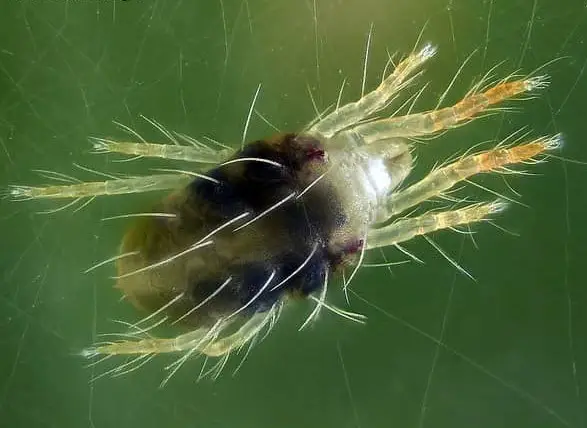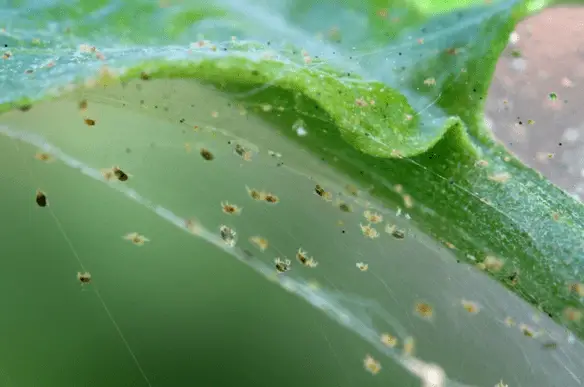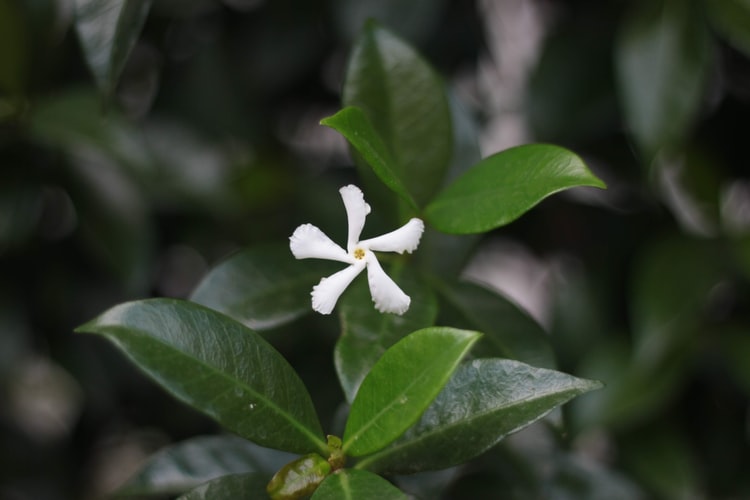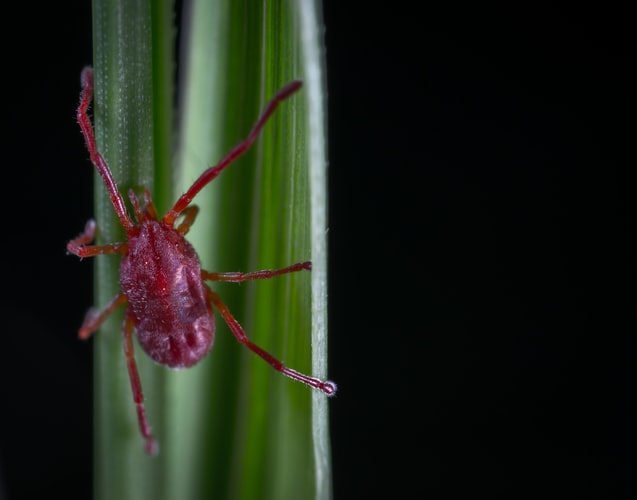It can be very challenging, yet not impossible, to identify what is causing your orchid to get sick. Orchid diseases can be caused by several factors such as fungal, bacterial, and pest diseases. It is crucial to know the different kinds of pests and insects that can harm orchids in order to have long-lasting healthy orchids for a very long time.
For example, when your orchid turns black or gains a necrotic color, the possible cause can be:
- Contains Fuzarium bacteria.
- Contains Rhizoctonia (crest blight)
- Enters putrefactive bacteria from the wound.
- Feeding damage by pests.
If you’re not sure how to identify the cause of the illness, I recommend taking your plant to a nearby nursery so they can diagnose the disease for you.
In this article, I will introduce to you the most common pests that tend to infest an orchid plant.
Table of Content
Insects
1. Aphids
There are many types of aphids. Generally, they grow on plant sprouts and buds. They suck the plant juice and slow down their growth process. In addition, they carry viral diseases from one plant to another. This causes large numbers of aphid-infected plants to eventually die.
The plant affected by aphids shows a sticky deposit on the leaves. In severe cases, aphids won’t allow the new orchid flower to open or the buds fall off.
How to Treat and Prevent Aphids on Orchids
It is very important to fight the aphids as soon as you spot them on your orchids.
Treatment:
- If you can spot only a few aphids, try to remove them using your hands while wearing gloves of course.
- You can also try to wash the aphids away from the plant with a jet of water.
- Other options include using a chemical pesticide spray. Follow the instructions on the product for better results because every brand has its own way of treatment.
prevention:
- In order to prevent aphid infestation on our orchids, we need to take advantage of the fact that aphids tend to be attracted to the color yellow. Try to use yellow tape or yellow dishes which contain soap water and place them on the bench to reduce density.
- Aphids hate shiny things. You cant use aluminum foil around the pot of your orchids. The aluminum will prevent the aphids to get on your plant.
Note
Keep ants away from plants as they can carry aphids and diseases.
2. Scale Insects
Scale insects are very common to occur in orchids. They are difficult to completely get rid of them. Generally, scale insects suck the nutrients and water of the orchid. You can spot them under the leaves. It is very similar to aphids. When a large number of scale insects infest your plant, it might seem like spot disease. If you have a magnifying glass, it is recommended to use it.
In severe cases, scale insect infestations cause chlorotic areas on the leaves and turn yellow. In some cases, the leaves will darken and lead the infected leaves to fall.
How to treat and prevent scale insects on orchids
Treatments:
It is best to remove scale insects as soon as you spot them on the orchids.
- Once you identify them, scrape them off immediately.
- Remove the infected leaves and bulbs.
- Do not use a brush to scrape off the insects as the brush can scratch the buds of the plant and leave out open wounds that can be touched by different diseases and viruses.
- Use either a soft cloth or gauze gently to remove the insects.
- Use an effective insecticide against scale insects.
In order to remove them, you’ll need to be patient because it can be quite difficult to get rid of them once and for all. So, please keep an eye on them constantly every one or two weeks.
prevention:
Scale insects tend to be transferred, therefore, if you introduce a new plant to your home garden, make sure to check it very well for any kind of pests or insects.
Note
There are some harmful insecticides to orchids that cause phytotoxicity. Make sure to use a safe one.
3. Mealybugs
The mealybugs are another sucking insect that absorbs all the nutrients out of the plant. They can be found all around the plant and especially at the junction of the leaves and stems of the orchid.
You can spot these insects once you notice a white fluffy powder in some areas of the plant, even on the flowers. In severe infestation cases, the leaves gain a dark color which will lead them to turn yellow and fall eventually.
How to treat and prevent mealybugs on orchids
Mealybugs are difficult, they need to be treated fast. However, if you ignore them, they will cause black filamentous fungi which will cause far more diseases and problems.
The same method used for scale insects is used for mealybugs as well.
Treatment:
- Use either a Q tip or gauze to remove the insects gently.
- For more effective removal, dip the Q tip or the gauze in isopropyl alcohol or a pesticide like Malathion, Orthene, or Safer Soap.
- In severe cases, spray pesticide, as the instructions on the label say, once all over the plant very well while making sure to spray under the leaves. Then, repeat the process after 15 days.
Prevention:
- Remove the severely infected leaves and petals.
- Isolate your plant away from your other plants to prevent them from spreading.
- Once you make sure the mealybugs are completely gone, you can safely put your orchid back to join its fellow other plants.
4. Thrips
Thrips, usually, appear in mid-April when the weather starts to get warm and dry. You can spot these insects on the petals of the orchids where most of the damage occurs. They turn the edges of the petals yellow.
These insects are small and black. They feed on young roots and leaves. They move very quickly and are not easy to catch manually. Additionally, they spend part of their life cycle in the soil. Therefore, you should first check the plant before purchasing. If you happen to spot these black small thrips, remove them immediately.
Thrips are the most difficult insects to get rid of in orchids. The first step to do is to isolate your plant away from the other plants if you have any.
How to Treat and Prevent Thrips on Orchids
Treatment:
- Thrips cannot survive in water, one way to get rid of them is to submerge your flower in water. After 10 minutes, thrips insects should be on the surface.
- Spray the entire plant and flowers with a pesticide like Malathion or Safer Soap.
- Make sure to reach every single part of the orchid because thrips are good at hiding.
- In severe infestation cases, repeat the application twice a week until they are totally gone.
Prevention:
- Remove the parts of the plants which are infected with thrips to avoid any eggs.
- Remove the weed and the debris surrounding your plant.
- Keep the orchid’s environment well sanitated.
5. Whiteflies
These insects look like small white butterflies. They have the ability to inhibit all parts of the orchid; they live on the roots and leaves. Whiteflies suck on the plant’s sap which makes the orchid weak and subjected to getting sick with various diseases.
How to treat and prevent Whiteflies on orchids
Treatment:
- Use a chemical spray such as Orthene or Safer Soap every 4 days until they are all removed.
- Another alternative can be laundry soap water. Dissolve a little bit of soap in water and then spray the whole plant.
- Fitoverm also works for whiteflies.
Prevention:
- Eliminating all the weeds around the plant will prevent whitefly infestations.
- Cultivation tools that you use must be disinfected and sanitized so you don’t recycle the spread of these insects.
- Cut off all the infected areas of the orchid.
6. Ants
Ants like to dig holes in the soil around plants for their own comfort. They, to a certain extent, do not cause many problems. However, you will need to worry if the hole is dug too close to the plant. Ants can suck the nutrients and water from the root system leading to root rot.
Additionally, since they are omnivorous creatures, they sometimes nibble on the roots of the orchid which affects the burrowing of the plant. This can also ruin the root system or become subject to being infected by bacteria.
Even though ants seem harmless, we need to always be on the watch for them around our plants. They reproduce quickly and crawl everywhere very fast. Ants also lead to aphid outbreaks as they are known to bring all kinds of edible things back to their nests. These things may carry different germs and bacteria which would lead the orchid to be vulnerable to diseases.
How to treat and prevent Ants on orchids
Treatment:
- Use the dipping pot method to eliminate all the ants safely. Immerse the entire orchid pot in a bucket full of water for about 20 minutes. After that, the ants will come out. Note that when you use this method, the weather shouldn’t be too hot otherwise it would cause the orchid’s roots to rot.
- Another method suggests using an antacid on the surface of the pot and the drain holes at the bottom.
Prevention:
- If you have any ants in your house, change the planting tools or after every use, sanitize them.
- Use fully decomposed organic fertilizer.
- Bask the orchid when the sun isn’t too hot because ants dislike dryness and prefer moistness.
- Put garlic or onions on the orchid plate. Ants don’t like the taste of them and will avoid them.
I wrote a detailed article about Causes of Ants on Orchid & How to Prevent & Get Rid of Them, you can check it out if you want to learn more about ants and orchids.
Related Article: Why Orchid Leaves are Turning Black & How to Treat Them
Arachnids
1. Spider Mites
Spider mites make an appearance at the end of the rainy season and the beginning of high-temperature and dry seasons. They can be found all year round depending on your region. One of their most outstanding symptoms is at the backside of the orchid leaves, you’ll find a sticky liquid and white webs. In those white webs, you should be able to see tiny red or brown mites.
How to treat and prevent spider mites on orchids
Treatment:
- Spay the leaves with a mixture of 1 part rubbing alcohol, 1 part Murphy’s Oil Soap, and 2 parts water. Mix well and then spray.
- Another mixture you can DIY at home is composed of a 2% solution of Johnson’s baby oil in water with some original Palmolive detergent.
- As a chemical solution, you can use miticide and follow the label instructions.
- Spider mites spread rapidly and reproduce. Repeat your chosen method every 4 days 4 times.
Prevention:
- Spray normal water on the leaves during the hot and dry weather.
- If you usually put your orchids outside the house, during high-temperature weather, bring them inside.
- Do not use undecomposed organic fertilizers which spider mites can feed on. Use organic fertilizers instead such as canola meal (rapeseed meal)
- If possible, use fully fermented fertilizers.
2. Ticks
Ticks are very different from spider mites. They are usually found in dark with high humidity places where light does not reach the orchid. Therefore, ticks are mostly found in organic matters such as sphagnum moss, also known as peat moss, and bark.
In rare cases, these ticks can infest your flower pollen. This will lead your orchid to wilt directly. Ticks are even smaller than spider mites. It can be very difficult to spot them with the naked eye. Therefore, if your orchid all of a sudden wilts, you might want to bring a hand lens to check them.
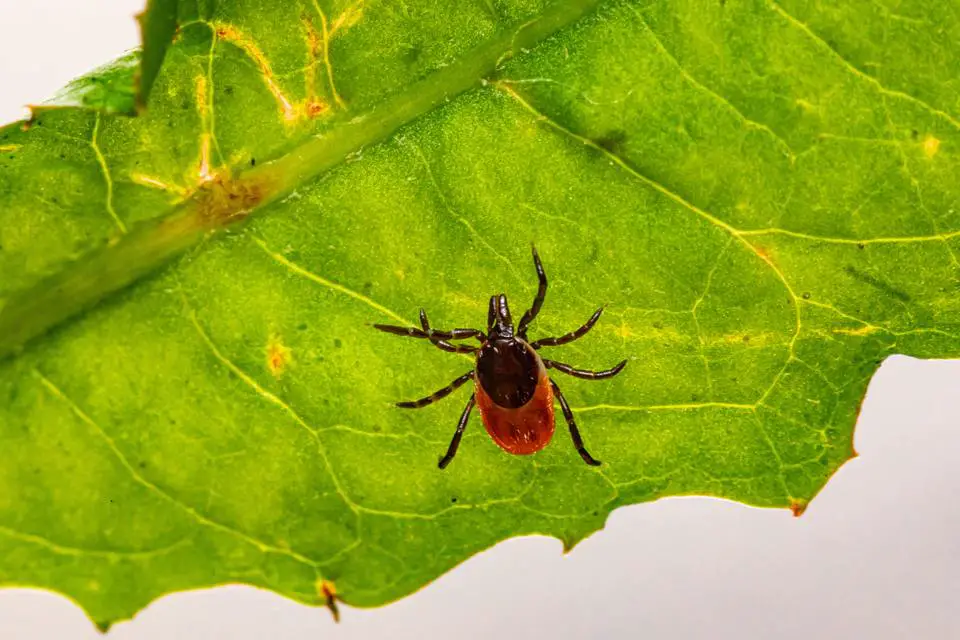
How to treat and prevent Ticks on orchids
As for the treatment and prevention, the same methods used for spider mites can be applied to ticks as well.
Related Article: Most Common Orchids Diseases & How to Treat Them
Other Pests
1. Grasshoppers & Cockroaches
Grasshoppers and cockroaches cause great damage to orchids. They both feed on flowers, new growth, and roots.
How to treat and prevent grasshoppers & cockroaches on orchids
Grasshopper Treatment and Prevention:
- This might seem cruel, but you need to crush and kill the grasshoppers you find.
- To prevent grasshoppers to damage your plant, bury a jar next to your plant, not too deep, filled with water and molasses. The grasshoppers will jump into it and drown.
Cockroaches Treatment and Prevention:
- You can use cockroach baits and spread them around the area of your pot.
- Another alternative can be a paste composed of boric acid, sugar, and flour mixed with water. Spread this paste all over. But you need to be careful to not touch the plant
- You can water the plant and then flush a mix of liquid Sevin (1 tsp/gal) through the pot.
2. Slugs & Snails
These insects do not occur in indoor orchids, however; it is not impossible. Slugs appear in rainy seasons. They tend to hide behind the pot during daylight and eat on the buds, flowers, root tips, and leaves at night. Very sneaky I’d say. The result of their chewing will leave the leaves and flowers with large holes in them.
One of the things that can help you know if your orchid is having slugs and snails accompany it during the night is the slime they leave behind on the buds and stems.
How to treat and prevent Slugs & Snails on orchids
Treatment:
- Remove all the weeds and fallen leaves around the orchid.
- Use a chemical repellent suitable for slugs and snails.
Prevention:
- slugs and snails tend to dislike copper ions, so it’s a good idea to put a copper plate (copper foil) around the pot as a precautionary measure.
- Put your orchid pot in a bright well aired place.
- Close the holes in the bottom of the pot with an insect repellent.
- A good home DIY will require a little bit of lime squeezed around the pot.
- Slugs and snails are known to dislike copper. Put a copper plate around the orchid pot as a precautionary measure.
3. Caterpillars
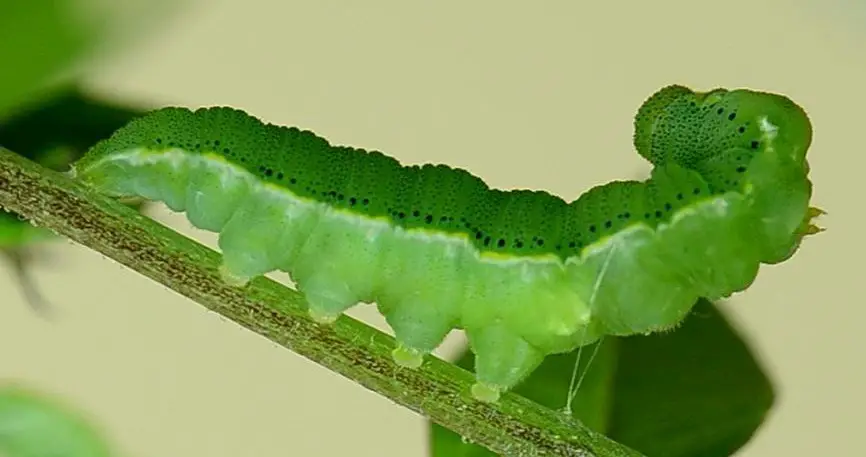
Caterpillars can cause great damage at the level of the flowers and leaves quickly to your orchid. They are not very common to be found on orchids, yet it is possible.
How to treat and prevent Caterpillars on orchids
Treatment:
- When you spot a caterpillar, remove it manually.
- If there are many caterpillars invading your orchid, you can use a pesticide or an insecticide.
Prevention:
- Keep the area of the plant clean of any fallen leaves or debris.
Note
Some insects have developed resistance to the already used pesticides and insecticides. You need to be aware of which product you choose.
Read next: Are Orchids Poisonous to Birds, Cats, Dogs, & Other Pets

